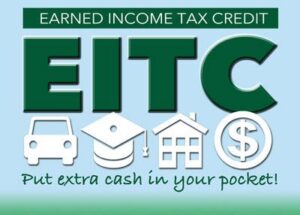Save Thousands of dollars while paying your tax in 2024. Things to keep in mind
Over the last 1 year tax pay is increasing at a constant rate with a decrease in pay. People are not getting much salary in hand to save and invest. So here we have brought some tips to save tax in this year of 2024.

RECHECKING AND REBALANCING
Rechecking and rebalancing the previous year’s data of 2022 and 2023 is very important to understand where the maximum tax pay has gone. Balancing money and making savings and expenditures on that basis is important. Rebalancing provides a discipline for buying low and selling high. From a tax perspective, it’s often neater to do so within sheltered accounts such as 401(k) plans and individual retirement accounts (IRAs). Otherwise, you would incur taxable transactions with each trade.
REDUCE TAXABLE INCOME
- Retirement contributions: Contributing more and more in IRAs to get benefits from tax after the year. the annual contribution limit for Traditional and Roth IRAs is $6,000 ($7,000 if you’re 50 years or older, thanks to the catch-up contribution).
- Health savings accounts (HSAs): A health savings account benefits US citizens. These allow tax-deductible contributions for qualified medical expenses and grow tax-free when used for medical needs.
- Individual: $3650 ($3,750 in 2023)
- Family: $7,300 ($7,500 in 2023)
- Additional catch-up contribution for those 55 and older: $1,000
- (Contributions to this scheme are tax-deductible reducing taxable income)
3. Flexible spending accounts (FSAs): An employer-sponsored benefit account for eligible employees. It allows employees to set aside pre-tax dollars for qualified medical expenses.
Maximum contribution limit set by the IRS: $2,750 (for both 2022 and 2023 and coming 2024). Employers may also set a lower limit.
EITC(Earned income-tax credit)

It is a refundable tax credit for low to moderate-income working individuals and families designed to encourage and reward work. It has certain limits to reach to avail this credit The maximum income limit varies based on filing status and the number of qualifying children. Income limits are subject to change annually. As of 2023, the maximum income for 2023 was $56,844 for a single filer with three or more qualifying children. The credit amount varies on the income filing status and the number of qualifying children.
If the EITC exceeds the amount of taxes owed, the remaining amount is refunded to the taxpayer.
The EITC is a powerful tool for working individuals and families. If you are thinking that you might be eligible, it’s worth exploring to ensure you receive the full benefits available to you. Keep in mind that eligibility criteria and credit amounts may change, so it’s essential to stay updated with the latest information from the IRS.
SOME OTHER WAYS TO SAVE
- Child and dependent care tax credit: You can claim this credit for childcare expenses for children under 13 or dependent care for qualifying individuals.
- Homeownership credits and deductions: You can claim mortgage interest deduction, mortgage insurance deduction, and other homeownership-related credits.
- Invest in municipal bonds: Invest in municipal bonds for tax-exempt interest income at the federal level and potentially at the state level.
Utilizing a Roth IRA is a smart strategy for tax planning in the US
- I. Tax-free withdrawals upon retirement:
Roth IRA contributions are made with after-tax dollars.
Eligible withdrawals in retirement, including income, are completely tax-free. - II. Tax Options:
Varying the types of retirement savings across tax plans can be beneficial.
Roth IRAs provide tax-free income, in addition to traditional pre-tax retirement accounts. - III. There are no Required Minimum Distributions (RMDs) in retirement:
Traditional IRAs and 401(k)s require minimum distributions starting at age 72.
Roth IRAs have no RMDs during the account holder’s lifetime, allowing for greater flexibility in withdrawal planning. - IV. Flexible retirement:
Contributions (not income) can be withdrawn at any time without penalty, providing flexibility for emergencies or specific financial goals.
The income can be withdrawn tax-free by keeping the account for at least five years after age 59½. - V. Benefits of estate planning:
The Roth IRA can be passed on to heirs, and the account is received tax-free.
The beneficiaries have the right to continue the tax-free growth during their lifetime.
If you want to get such premium content on finance money topics subscribe and visit —————>>>> thefinancepay.com